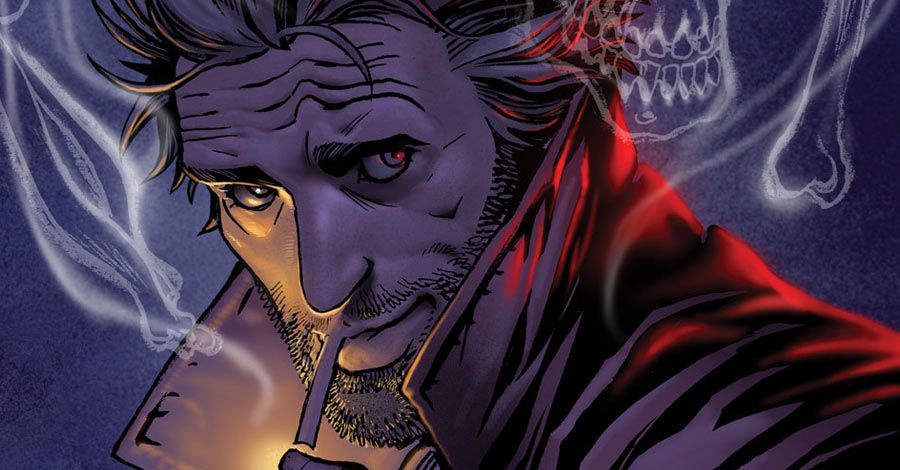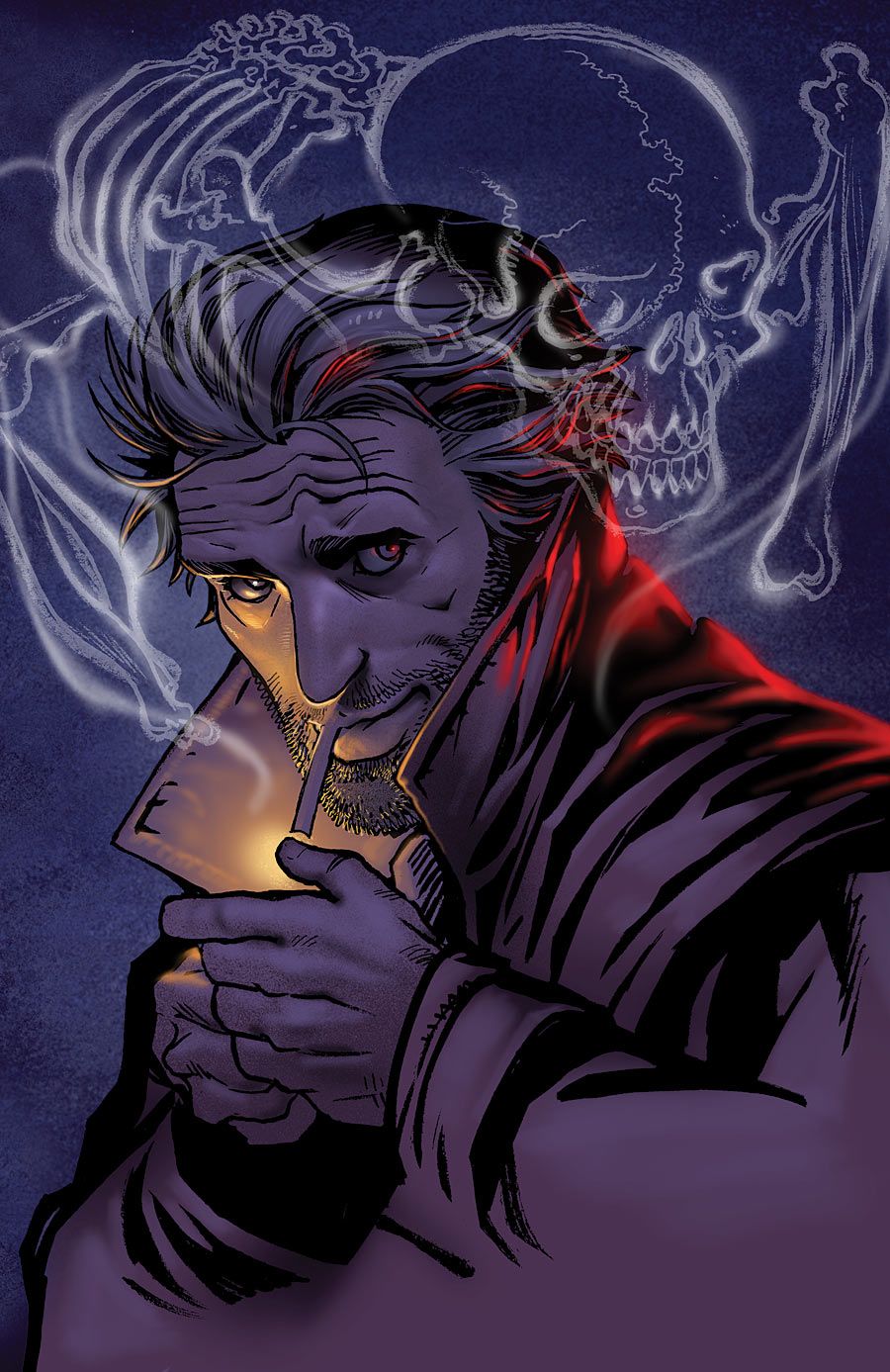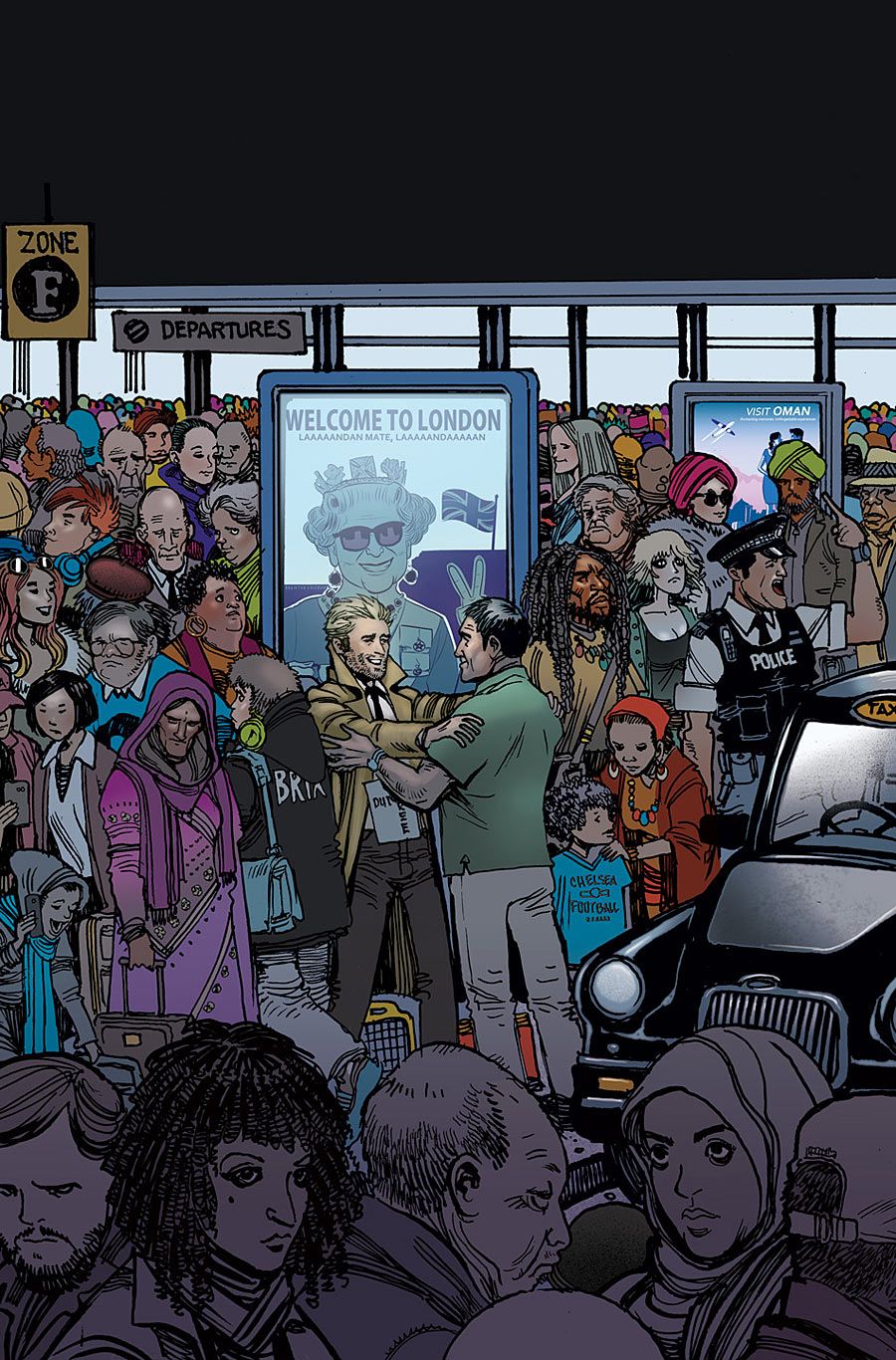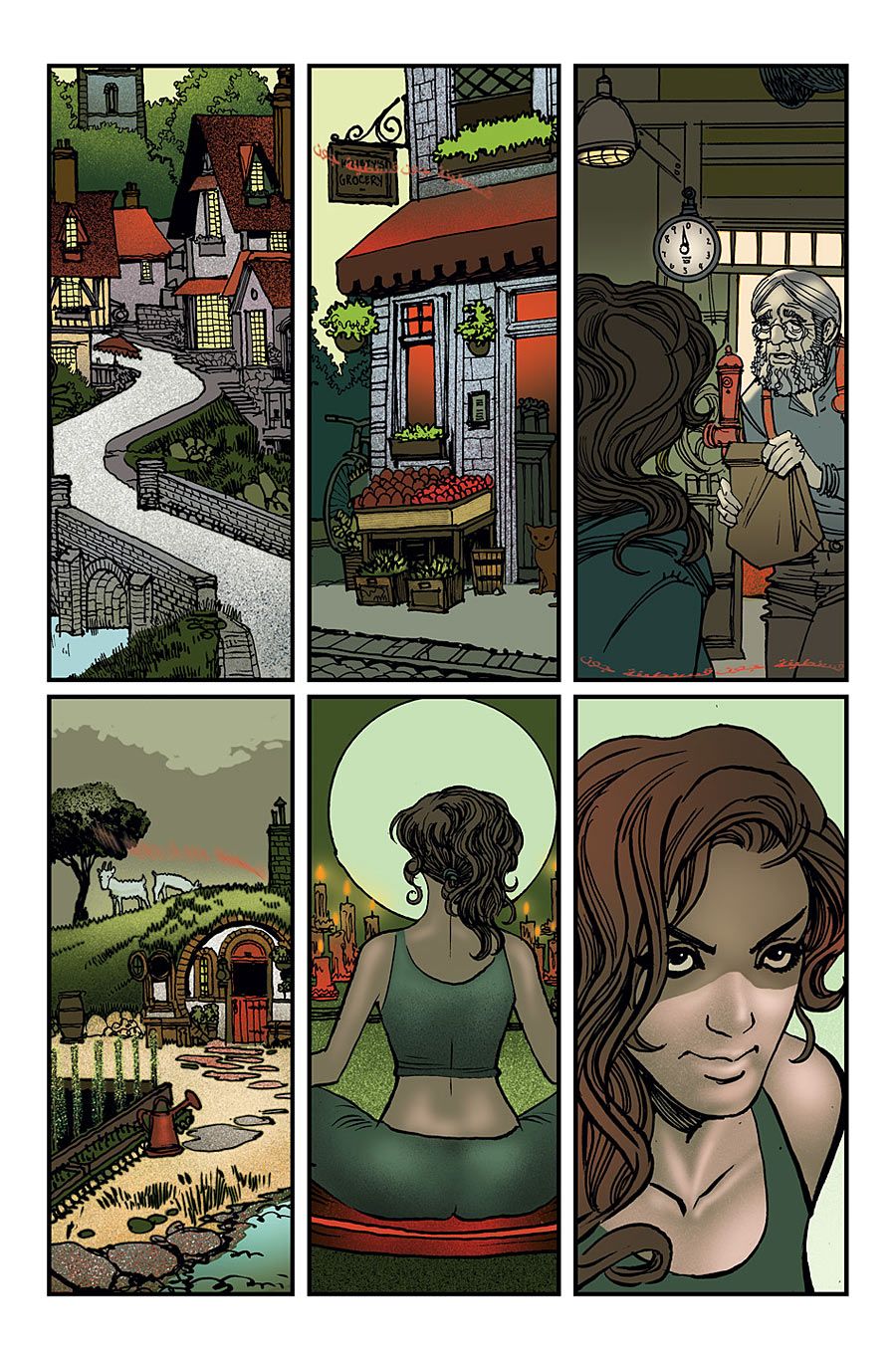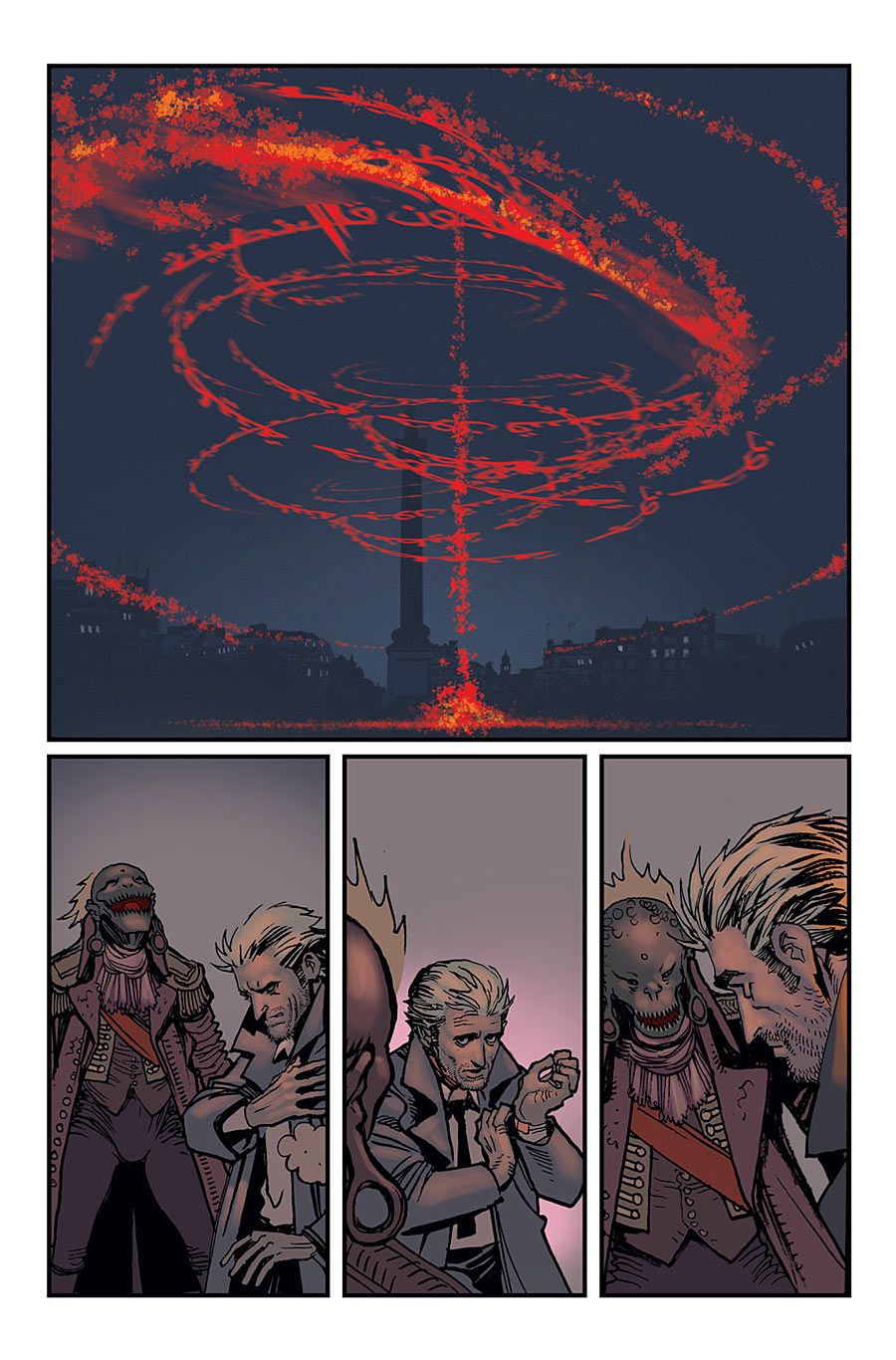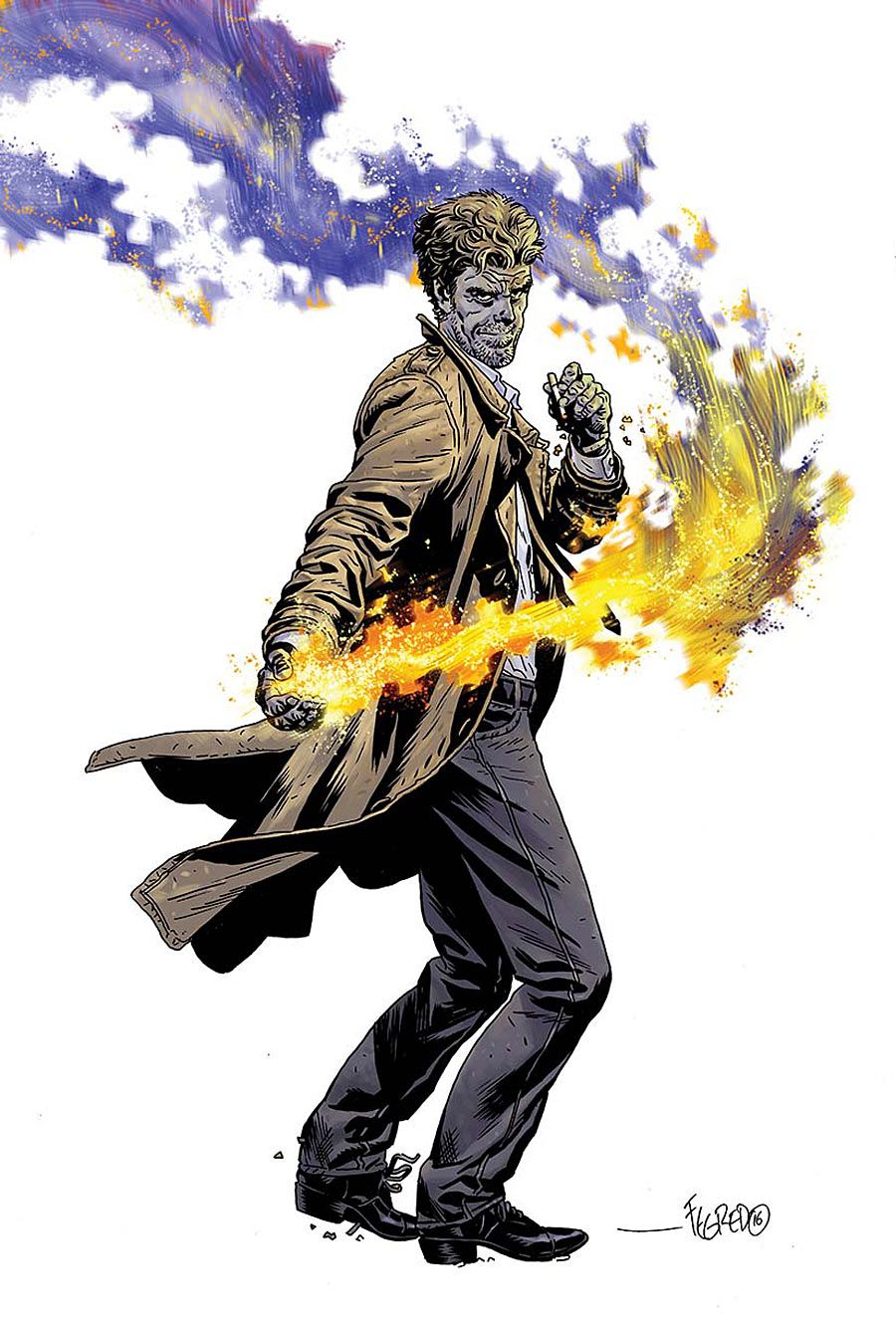"The Hellblazer" debuts as part of DC Comics' Rebirth, with canny bastard John Constantine heading back to his homeland for a new ongoing series. Writer Simon Oliver scripts this homecoming, marking the first time in a fair while that a British writer has once more been at the helm of "Hellblazer" -- and a return to the world of Constantine for Oliver, who last wrote the character for the publisher's mature readers imprint, Vertigo Comics.
RELATED: Constantine Plays High-Stakes Poker in "Hellblazer" Fan Film
On this new series, he's joined by artist Moritat, who has been a long-standing presence at DC Comics. It's a smart, creative combination for John Constantine, as Oliver's scripting and Moritat's singular artistic style should result in a heady and engaging portrayal of the supernatural, granting "The Hellblazer" a genuine sense of edginess its fans crave.
John Constantine is still synonymous with Vertigo for many readers. What do you think sets him apart from the rest of the DC Universe? He's a cynical bastard, sure, but he also feels like a genuinely unpredictable anti-hero. Does he have a heart of gold?
Simon Oliver: He wears his underwear inside his pants? And to me he feels human, he feels real, he has no superpowers -- I don't think he's even that good at magic. His skill lies in the con, and his ability to read people and play them like a cheap violin. As for a "heart of gold," I'd say it was 12-carat plated at best. There's a limit to his kindness.
Moritat: Heart of gold? No.
[Laughs] The long term appeal of John Constantine, that has put him in the top comic book characters of all time, is not like the moral argument of Batman struggling a bit past his sanity, or Superman arriving at the last second to save humanity. Hellblazer lives and thrives in the haze and grey of the polarized rights and wrongs.
John Constantine is the character we misfits seek and scream for when heroes can't save us!
The first issue is set in England, and is filled with cabbies, grocers, curries -- it's very very English, really. Was this a conscious decision to walk the character back toward his working class roots?
Oliver: Yes, totally. At its heart that's what the book is, the supernatural set and surrounded by the mundane and you don't get more mundane than England. I felt like he'd moved away from that and really wanted that issue to underline that part of him. I want him gritty and hungover.
How did you end up writing the new "Hellblazer" series?
Oliver: I got an email asking me if I was interested and pretty much jumped at it. Out of any character in the DCU, Constantine is probably the one I'm best cut out to write and the one that means the most to me.
Moritat: I received an email from my editor on "Justice League: Gods and Monsters," Kristy Quinn. As usual I thought it was for a fill-in issue -- it took some actual brain power to re-read and realize it was to re-launch "Hellblazer."
The industry joke seems to go from "the guy who can draw hats" to the "guy who can draw hats and smoking."
When was your first introduction into Constantine the character, and "Hellblazer" the series?
Moritat: I read some of the original "Swamp Thing," but the real introduction for me in terms of artistry was "Hellblazer" #1 with John Ridgway.
Oliver: I think probably the [Jamie] Delano run.
This isn't your first time writing in Constantine's world, Simon -- you also wrote "Hellblazer Presents: Chas -- The Knowledge" for Vertigo a few years back. Do you see your take on John here as being particularly different from the John we saw at Vertigo?
Oliver: No. I was asked to take him back to his roots -- and as the first British writer to work on the book in a while, it was kind of a no-brainer that that would be what I was doing with him.
I'm not ignoring the DCU stuff, but to me he's grounded in the Vertigo version. Content-wise there's stuff I can't do because it's not a Vertigo book, but in terms of who he is, and the world he lives in? That's how I'm approaching it. He's back to being a cynical bastard.
And Moritat, how do did you look to capture England on the page? Did you work off reference?
Moritat: I think everyone works off reference and wire models now. I'm a visual person and love to explore urban environments -- watch people, eat street food. There is a new renaissance in comics now. Instead of panel caption: "Paris, Now." We now find that cities, whether they be Star or Gotham, are characters in the stories again. I've had the thrill of exploring London before and am very happy to return to explore it further for the book later this month.
What's your approach to drawing the character on the page? What kind of body language does he have and how did you want to present him to readers?
Moritat: One of the exercises in method acting is to mimic an animal: Robert De Niro used a crab for Travis Bickle, in "Taxi Driver." I re-read all the John Constantine stories, discussed with Simon what his ideas were... and settled on a fox!
That's interesting. What tone can we expect from the series? Do you view this take on "Hellblazer" as leaning into horror, thriller, comedy, fantasy or...?
Oliver: Silk Cut and fry-up fueled fantasy.
Actually it's probably all those things -- and has always been all those things. But to me, above all, it has to be grounded and it has to be funny sometimes -- but a dark, dark, nasty biting humor, which is of course scary from time to time. The luxury of working on an established book is someone else has done the groundwork on "Hellblazer," and the character now kind of fills his own genre after all these decades.
Moritat: Great question! I've drawn Batman since I was a little kid, but it wasn't until recently that I got to draw a Batman who appeared in a DC comic. When it finally happened I had to completely rethink everything I knew about Batman.
The same was true for John Constantine. I would say come and read the book with us as we find out!
What kind of approach do you take toward the 'rules' of the supernatural in the series? Do you think there are very specific rules in place that govern everything, or do you prefer to view this as a world where anything can happen at any time?
Oliver: I think anything can happen. The opening arc takes a step away from the idea of heaven and hell and introduces something new that touches a little on where science meets magic. At least for the moment I think John's taken enough trips to hell.
Moritat: You know, it's difficult to say. Before I had this assignment I would have drawn a pin-up or illustration with some lights and shapes. Having worked on this now, collaborating, reading books that Simon has introduced me to, I would say it would depend on how close one is to a ley line.
Oliver: For me the times that the book and the character have stumbled a little is when it's relied too much on the supernatural aspects at the expense of the characters. To me all the spells and magic in the world takes a back seat to Constantine and Chas' relationship, or how Mercury reacts to him re-entering her life after all these years. That's what sets the book apart.
Both Chas and Mercury show up in your "Rebirth" issue, but what can we expect to see from the series moving forward -- is Hellblazer going to build up a cast of recurring characters, or is the plan to keep focus on Constantine and his travels?
Oliver: Yeah, I couldn't not bring Chas back. And there will be some old characters coming back along with new ones.
How has your collaboration been so far? Has it evolved much since you first started working together?
Moritat: Simon and I are kind of "non-clubbable" as he puts it. We talk and discuss all manner of things, linguistics, philosophy, all these things re-route themselves back to story at hand.
Oliver: It's still early days, but I'll pull a reference or two and a general overview of the demons and bad guys and see where we go with it. I always see the script as a starting point, not an end point of the process, there's always room to explore and find new angles I might have missed while writing it.
Some incredible artists have worked on "Hellblazer" over the years. Would you view it as one of 'the' books which artists want to get a chance to work on, and provide their own definitive version of Constantine?
Moritat: After it was announced the reaction from fellow artists was incredible! It went from, "You? Really?!" to "It's about time!" I got more feedback on John Constantine than any characters I have worked on before combined and then doubled. But I don't see it that way. Especially not now.
It's like getting a knock at the door and there are Riley Rossmo and Eryk Donovan with the "Hellblazer" torch in their hand, and behind them are Steve Bissette, Ron Tiner, Simon Bisley with a fifth of whiskey -- they all come in and stand behind me at the drawing table. Damn, Sean Gordon Murphy, too. Heap on all the writers, Keanu Reeves, Shelly Bond, judgmental relatives and all the fans! They all laid the foundation; worked the trowel; scored the brick.
I'm just a sorcerer's apprentice brought in to maintain the beauty of their construction.
"Hellblazer" has such a long history to it now, and it feels like a book with real legacy on and off the page. Do you view this new version of the book as an opportunity to make your own commentary on society, tradition, religion and the like just as it was as during the original Vertigo run?
Oliver: Yeah, I always really liked that aspect of the old run. I think John's politics gave the character that heart he might not have had otherwise. Having grown up with Thatcher I know where he's coming from and what it was like back then. I don't have a heart of gold and I'm a bit of a bastard, but politically I make no bones about what I think is right and wrong and it always leaks into my work somehow.
I've put a little of that in the first few issues, but it's something I'd like to touch on more as the story unfolds, particularly as I'm relocating him back to England. It feels like it's be a lost opportunity if I didn't.
"The Hellblazer: Rebirth" #1 by Simon Oliver and Moritat arrives July 20 from DC Comics.

